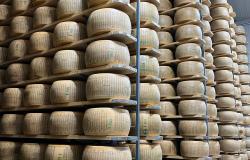 Ravenna, the capital of Roman and Byzantine mosaics, has turned its hand to a fresh clutch of works, restoring a number of priceless designs on loan from Syrian museums.
Ravenna, the capital of Roman and Byzantine mosaics, has turned its hand to a fresh clutch of works, restoring a number of priceless designs on loan from Syrian museums.
The mosaics, which go on public display here at the start of August, were all created by artists during the late Roman period, when Syria was a province of the Roman Empire.
Ravenna was the centre of late Roman mosaic art in the 5th century AD but Syria was also considered a crucial production point.
Its capital Antioch was particularly renowned, and was for a long time one of the most important areas of mosaic production in the entire Roman Empire.
'Mosaici d'Oriente. Tessere sulla via di Damasco' (Mosaics of the East. Tiles on the Road to Damascus) will showcase a selection of precious artworks from this era.
Most of the mosaics were designed for the floor and feature a variety of animals - symbolic designs whose meaning is still being studied by experts.
One shows a series of animal pairs - a zebra and a lion, a cheetah and a unicorn - facing a fruit tree.
Another depicts symmetrical pairs of birds and quadrupeds standing next to a large urn.
A third panel shows scenes from a hunt, including animals chasing one another, against a background of stylised rose-designs.
The exhibition, the result of months of careful restoration work by Ravenna experts, is the second in a series of collaborations between the western Italian city and Syria.
A show last year, looking at the golden age of Ravenna, explored the town's influence throughout the Mediterranean and included a number of Syrian mosaics among its 100 pieces on show.
Ravenna developed rapidly after first replacing Rome as capital of the Western Roman Empire in the 5th century AD and later becoming capital of the Byzantine Empire.
Its rulers built the finest Byzantine churches outside Constantinople and to this day, the city retains its name as the 'Capital of Mosaics'.
Among the city's most famous pieces is its Mausoleum of Galla Placidia, from 425-430, which shows a gold cross in the middle of a starry sky.
Later pieces, completed after Ravenna was conquered by the Byzantine Empire, include mosaics in the Basilica of San Vitale, showing a series of scenes from the Old Testament, and small sequences in the Basilica of Sant'Apollinare Nuovo, depicting Christ's miracles and parables on one side, and the Passion and Resurrection on the other.
The exhibition of Syrian mosaics goes on display in the Church of San Domenico, from August 4 until November 5.


